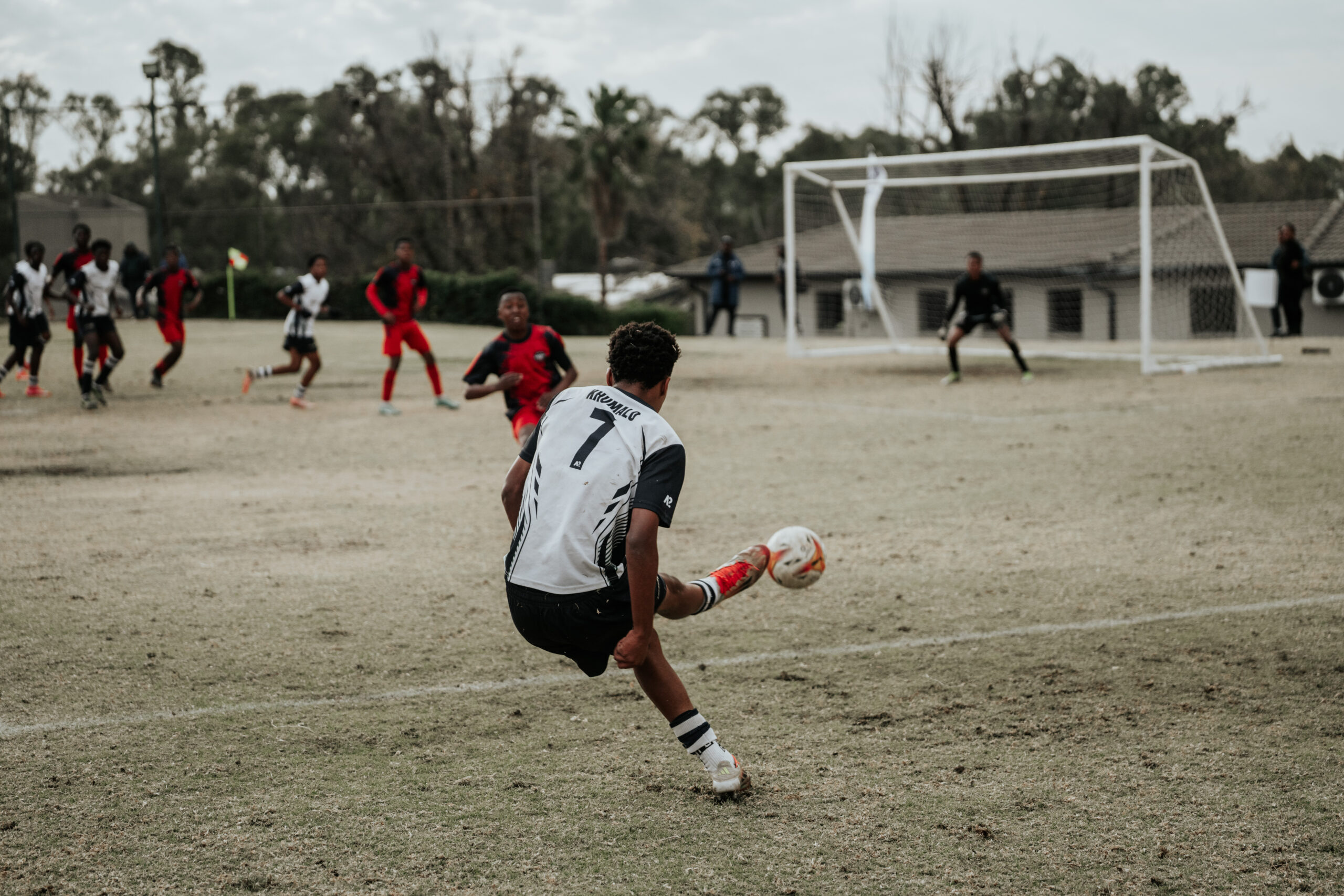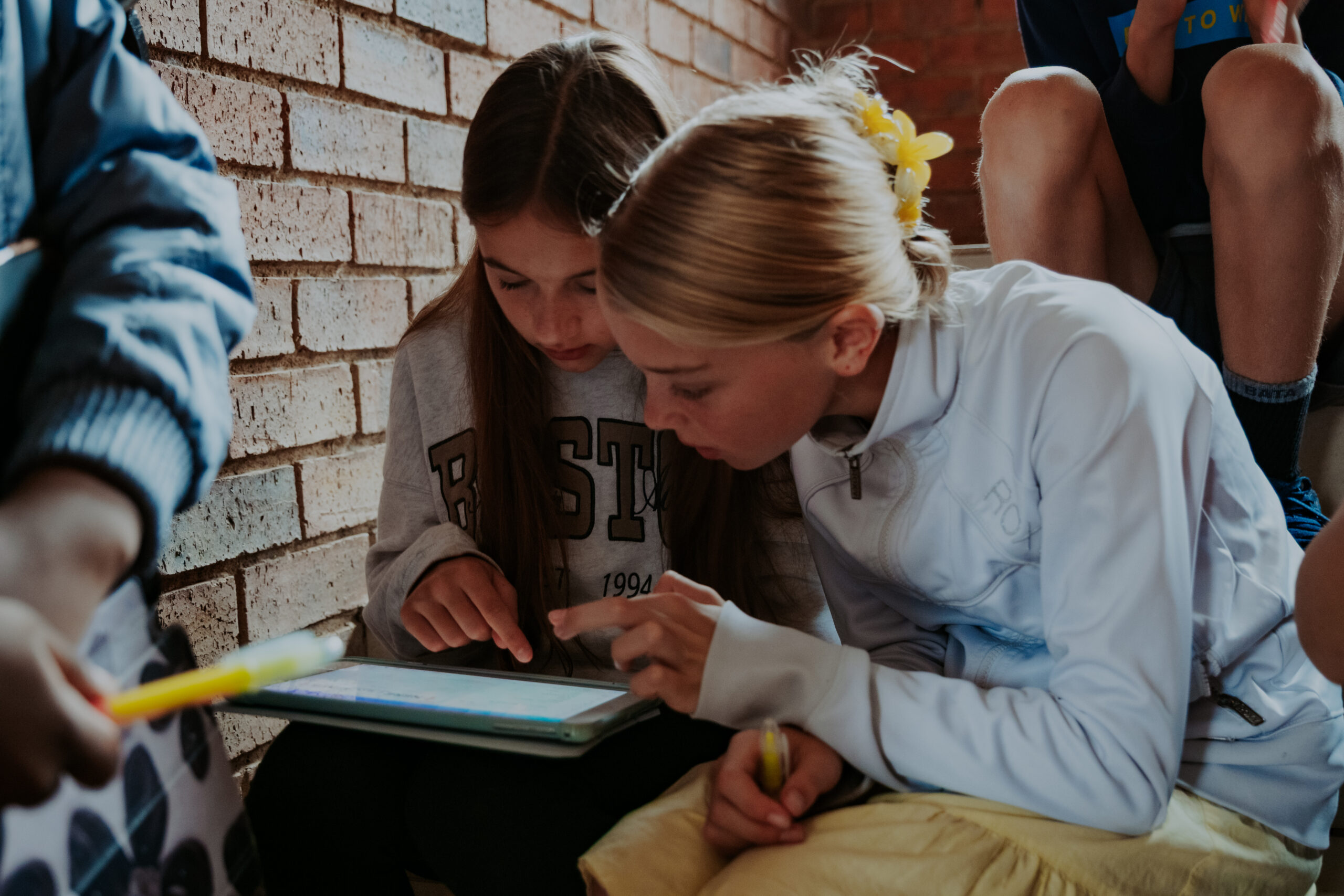Why Sport and Extra-Murals Matter for Future-Ready Learners
By Megan Trickey (Executive | Learning & Development)
At our recent FIRST ADVENTURE > Grade 9 Subject Choice Evening, many parents raised thoughtful questions about how sport and extra-murals fit into the busy lives of learners preparing for demanding academic pathways. Questions such as:
- Does taking harder academic subjects mean you don’t need to do sport?
- Why is sport compulsory if balance is important?
- Won’t sport and extra-murals put more pressure on learners?
- How can learners juggle both without sacrificing academic success?
These questions have stayed with me this week. As an HPCSA-registered Educational Psychologist and as Executive for Learning and Development at our school, I am deeply invested in the holistic well-being of our learners. The expressed desire from some families to “drop sport” in order to focus more on academics has troubled me—because research and experience consistently show that sport, the creative arts, and other extra-mural activities are not distractions from learning and development, but vital contributors to it.
Having worked for over a decade in one of South Africa’s highest-performing IEB schools which uses a strong narrative of excellence in education, I found that questions around cutting sport and extra-murals were very rarely raised in that context. It has therefore surprised me to see how strong the voice for dropping extra-murals is within our context at King’s at present, even as early as Grade 9. This contrast highlights how important it is for us, as a school community, to pause and reflect on what we value in developing balanced, future-ready learners.
Building the Whole Child
Research consistently shows that physical activity and structured extra-murals support both well-being and academic success. For example:
- A 2023 multi-level meta-analysis of 92 randomized controlled trials confirmed that physical activity interventions improve both cognition and academic achievement in school-aged children¹.
- A systematic review of acute effects found that even a single 20-minute session of moderate exercise can immediately enhance focus and cognitive performance².
- Longitudinal studies suggest that learners who sustain regular sport participation benefit from improved attention, lower absenteeism, and stronger academic trajectories³.
- A 2021 meta-analysis concluded that sport participation has a positive effect on academic performance, particularly when engaged in consistently but not excessively⁴.
The message is clear: sport and extra-murals don’t take away from academics—they directly enhance them.
Time Management, Discipline, and Balance
One of the biggest misconceptions is that cutting out sport and extra-murals will free up more time for academics. In reality, time away from structured activity doesn’t automatically become study time. A 2023 study of 8–9-year-olds found that children who combined regular physical activity with limited screen time and sufficient sleep had stronger academic skills⁵. Unstructured afternoons are often absorbed by devices and distractions, which can undermine learning and increase exposure to online bullying, inappropriate content, and social isolation. Sport and extra-murals, by contrast, provide a structured, safe, and engaging environment that supports both learning and social development, helping learners use their time productively while building healthy habits.
Beyond supporting focus and well-being, structured activities teach learners discipline and time management. They must balance homework, study, and rest around practices and matches—skills that mirror the planning and organisation they will need as adults to juggle work, family, and personal responsibilities.
Far from being “extra pressure,” sport and extra-murals create rhythm and balance in a learner’s week, fostering habits of discipline, resilience, and holistic well-being that extend far beyond the classroom.
A Healthy Lifestyle Beyond the Classroom
Another important aspect of sport and extra-murals is their contribution to a healthy lifestyle:
- Outdoor activity takes learners away from desks and screens, reducing digital fatigue and improving mental health.
- Team activities provide social connection and belonging, which are protective factors against anxiety and depression.
- Longitudinal research shows that regular physical activity during adolescence is associated with a significantly reduced risk of depression in adulthood⁶.
Sport is not just about fitness—it’s about equipping learners with habits of health, resilience, and community that will lay the foundations for healthy and balanced adult lives.
The Creative Arts: Developing Innovative Thinkers
While sport builds resilience and teamwork, the Creative Arts develop another vital set of skills for the future.
Research shows that arts participation strengthens cognitive development, memory, and emotional intelligence⁷. Learners involved in music, drama, dance, or visual arts also enhance executive functions such as problem-solving, planning, and adaptability—skills essential for leadership and innovation.
The arts promote neuroplasticity, improving focus, creativity, and hand–eye coordination, while also providing a powerful outlet for emotional well-being. In a generation described as “the most anxious ever,” creative expression has been shown to reduce stress and build confidence⁸.
By turning ideas into reality, learners cultivate perseverance, resilience, and a growth mindset. Whether through choir, drama, or visual art, the arts nurture adaptability and innovation—qualities the future workforce will demand.
Preparing Learners for the Future
The world of work demands more than academic knowledge. Employers and universities are looking for learners who can collaborate, lead, adapt, and persevere. Sport and extra-murals are where these skills are practiced daily:
- Leadership is built in captains, coaches, and group projects.
- Resilience is built in losing a match and trying again.
- Adaptability is built when balancing practice with tests and exams.
Choosing more challenging or time-consuming subjects does not reduce the importance of these skills—if anything, it makes them more essential. The greater the academic load, the more valuable structured activity and healthy outlets become in sustaining motivation and well-being. Sport and extra-mural participation are an essential part of developing future-ready individuals.
In Closing
As an HPCSA-registered Educational Psychologist, I want to reassure parents that sport and extra-murals are not in competition with academics—they are in partnership with them. They develop the discipline, creativity, balance, and resilience that learners need not only to succeed at school, but to thrive in adulthood.
By engaging in these activities, learners are not “losing time” but gaining health, discipline, confidence, and friendships. In a world where young people are increasingly drawn into sedentary, screen-based routines, sport and the arts are vital in helping them live healthier, more balanced lives.
From a Christian perspective, caring for our bodies and minds aligns with biblical principles of rest and stewardship. Scripture reminds us of the value of Sabbath and intentional rest, which is not idleness or simply increasing unstructured time, but a purposeful rhythm that nurtures both body and mind. Sport, extra-murals, and creative pursuits provide structured, healthy outlets that honour this rhythm—offering rest from academic pressures, fostering community, and strengthening learners physically, emotionally, and spiritually. By participating in these activities, learners practice balance and self-care in a way that reflects both psychological insight and biblical truth, preparing them to thrive in all aspects of life.
As one researcher put it: “Healthy bodies build healthy minds—and creative minds build innovative futures.” Keeping sport and extra-murals compulsory ensures our learners are not only academically prepared, but truly future-ready.
References
- De Greeff, J.W. et al. (2023). Physical activity interventions on cognition and academic achievement in school-aged children: A multilevel meta-analysis. Educational Psychology Review.
- Hillman, C.H. et al. (2023). The acute effects of physical activity on academic achievement in school-aged children: A systematic review and multilevel meta-analysis. International Journal of Behavioral Nutrition and Physical Activity.
- Kremer, P. et al. (2024). Sticking with sport during school years linked to academic success. University of Sydney Longitudinal Study.
- Vella, S.A. et al. (2021). Sport participation and academic performance in children and adolescents: A systematic review and meta-analysis. Journal of Sport and Health Science.
- Syväoja, H. et al. (2023). Physical activity, screen time, and sleep as predictors of academic skills in children. BMC Public Health.
- Winner, E., Goldstein, T.R. & Vincent-Lancrin, S. (2013). Art for Art’s Sake? The Impact of Arts Education. OECD Publishing.
- Fancourt, D. & Finn, S. (2019). What is the Evidence on the Role of the Arts in Improving Health and Well-Being? WHO Health Evidence Network Synthesis Report 67.
- Haidt, J. (2024). The Anxious Generation: How the Great Rewiring of Childhood Is Causing an Epidemic of Mental Illness. London: Allen Lane



